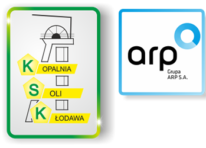The basis for the construction of the salt mine in Kłodawa are gravimetric tests, which started already in the 1930s, and have been carried out in the vicinity of Kłodawa. These tests have shown that there is a powerful salt diapir shallowly hidden in this area.
World War II interrupted the research for several years. They were resumed after the end of hostilities. An outline of the great structures of rock salt and magnesium-potassium salts was obtained.
The construction of a mine and a potassium salt processing plant was started. It was located it in the middle section of the salt diapir. During the construction, it turned out that the deposit contains mainly rock salt, while magnesium-potassium salts are present in smaller amounts. The first tonnes of rock salt were excavated in 1956. In 1958, as a result of a change in the production profile, the existing name of the plant was changed — a new company, „Kłodawa” Salt Mine, was established. The plant was to extract 450 thousand tonnes of salt per year. It reached this level in the late 1960s.
The 1970s saw the expansion of the mine — production at that time was over a million tons per year.
The industry was the biggest recipient of the salt mine. Along with the downturn in industry (at the turn of the 1980s and 1990s), the demand for salt also decreased, which resulted in the decrease in extraction in the „Kłodawa” Mine.
Currently, the mine is the largest domestic producer of rock salt. The extraction is carried out using the traditional mining method, which allows the preservation of the natural values of the Kłodawa salt. The final products are obtained by mechanical processing of salt, without the use of chemical treatments.



























